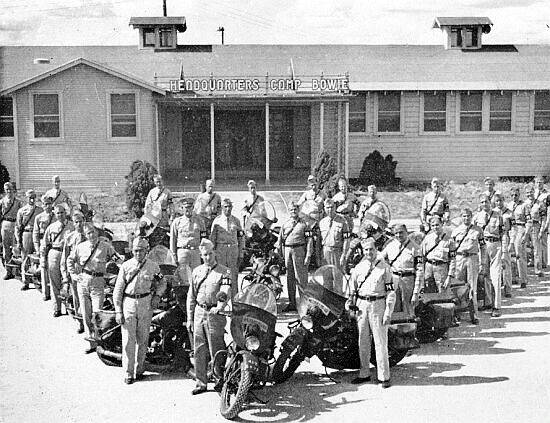
Courtesy photo
On Dec. 28, 1943, the whole 51st Field hospital — which at that time consisted of seven officers and 191 enlisted men — moved to the LMAB for an additional two-week period of very specialized intensive training. This training included mock-up air transport and rigging.
On Dec. 28, 1943, the 51st Field Hospital moved
to the Laurinburg-Maxton Army Air Base site
The US Army 51st Field Hospital with its three distinct hospital units was a main, if not the main, field hospital of the US Army as it moved across France and Belgium into Germany in WW II.
At 4 p.m. on June 8, 1944, two days after D-Day, with 21 officers and 191 enlisted men the hospital landed on Omaha Beach. On June 9, the ship with the hospital’s equipment began unloading and, by June 10, almost 100 tons of equipment and supplies had been unloaded. The nurses arrived at 11pm on June 10 on the Liberty Ship “Frances Drake,” which incidentally was manufactured in Wilmington.
The hospital was supposed to be set up at nearby Englesqueville but because Englesqueville was still in enemy hands the hospital first set up on the top of the hill behind the Easy Green sector of Omaha Beach. On June 11, five days after D-Day, the 51st Field Hospital was fully open for business.
During the rest of the war the 51st moved numerous times as it stayed close to the US Army’s front lines. It saved the lives of literally thousands of seriously wounded soldiers. In addition, when needed, it treated civilians, freed prisoners of war and wounded German prisoners. It is obvious that this extremely important military hospital played a major role in providing emergency care and surgery throughout the war in Europe.
What does all of this have to do with the Laurinburg-Maxton Army Air Base?
There are some locals still around who remember in 1942-44 the very active LMAB with its 7,500 troops and transport planes day and night overhead pulling one or two gliders. Many residents rented rooms in their homes so that the wives of the pilots and others could be nearby as they were undergoing training. A second movie theater, the Gibson Theater, was opened downtown and usually in the evenings both theaters had long lines of GI’s waiting to get in.
As stated in a Laurinburg Exchange article in 2016, the LMAB was established to train and equip glider airborne units which involved coordinated training with army paratroopers, infantry, artillery, engineers and medical units.
Military leaders were looking for additional ways to quickly get a large number of troops, vehicles and supplies to the European continent whenever the invasion occurred. Generals Dwight D. Eisenhower and George Marshall were extremely interested in this large glider base and allegedly made several unannounced trips to the LMAB, quite a deal for this Army Base and two small North Carolina communities.
The 51st Field Hospital had its beginning or activation on Sept. 10, 1943, at Camp Bowie in Brownwood, Texas. The months of October, November and December 1943, were occupied with intense routine training and personnel placements. This included simulated hospital setups, physical conditioning, tent pitching, sanitation and field hygiene training for various technicians, cooks, drivers, and clerks.
On Dec. 28, 1943, the whole 51st Field hospital — which at that time consisted of seven officers and 191 enlisted men — moved to the LMAB for an additional two-week period of very specialized intensive training. This training included mock-up air transport and rigging. On Jan. 10, the 51st moved on to Fort Bragg where routine training was resumed with technical personnel gaining more practical experience at the large Womack Army Medical Center.
Of course it was a very brief stay, but it is definitely worth remembering that the LMAB played an important role in specific special training for this essential major WW II field hospital. Yes, the Laurinburg-Maxton Army Air Base was more than a glider base!
William R. Purcell, MD, is a Laurinburg resident and former state senator from Scotland County.
